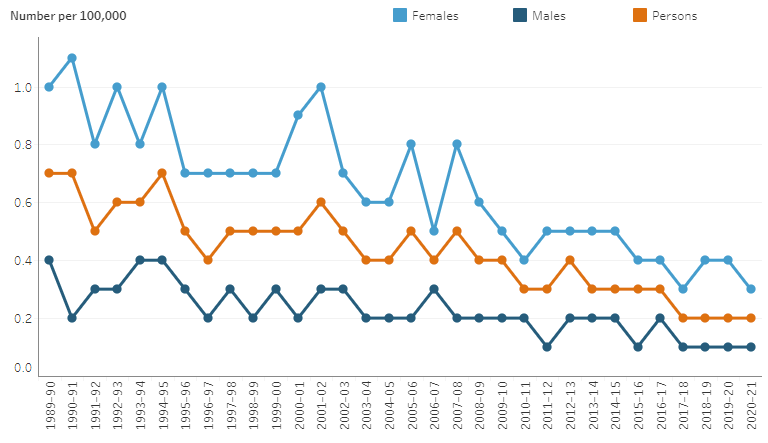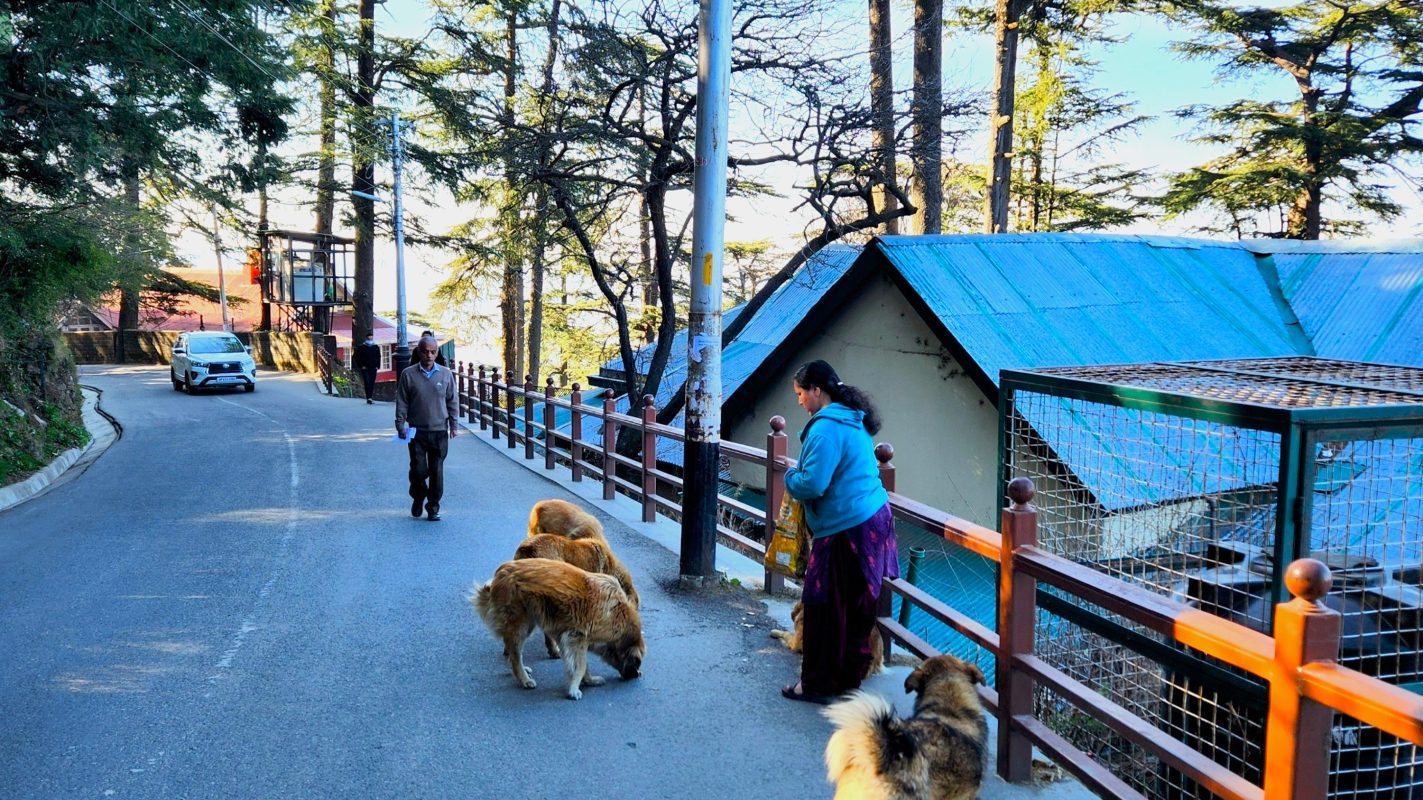Social policy
Domestic violence in Australia: some things the statistics say (and the media should report)
Amid Australia’s justified concern over male violence against women, we should remember how much we have been able to achieve so far. Some important indicators of violence against women have more than halved in the past three decades.
Prologue: Violence against women is a bad thing, and it’s still bad even when it used to be worse. We should be trying hard to lower rates of violence, by finding good solutions and implementing them with urgency. We should also understand just what we’re dealing with – which is what this summary tries to do.
The issue of violence against women is in the news right now. Here’s a short summary of what we know about the issue in Australia.
-
- Before we say anything else, we need to acknowledge this: an accurate picture of violent crime is hard to get at for several reasons, but mostly because most official crime figures are so very, very unreliable. That goes double for violence against women. Many crimes never get reported, or the police don’t charge anyone, or judges and juries don’t convict – and all of these things change over time as society changes.
- It’s hard to exaggerate what a problem this is. My strong impression is that most of the public and many commentators expect government crime statistics will tell us everything we need to know. They never do.
- How bad is the problem? One typical analysis claims that “about 70% of domestic violence is never reported to the police.” You can probably come up with plenty of reasons why this figure is so high.
- Rates of reporting, charging and convicting thus affect the figures far more than do underlying changes in the actual level of violence in Australia.
- The result of all that is that most experts don’t trust all the official statistics to give them an accurate read on what’s happening. Instead they look for the most reliable figures – which are, necessarily, the figures that will suffer least from under-reporting. That leads them to the figures for homicides. These suffer less from under-reporting, simply because it’s hard to avoid people noticing when someone dies.
- The homicide indicators suggest Australian violence against women continues to fall, at a speed that might surprise many people. Among the most reliable indicators is intimate partner homicide; female victims are down 60+% in the 31 years to 2020-21. (Source: Australian Institute of Health and Welfare)
Intimate partner homicide, 1989-90 to 2020-21

Figure from AIHW
- Before we say anything else, we need to acknowledge this: an accurate picture of violent crime is hard to get at for several reasons, but mostly because most official crime figures are so very, very unreliable. That goes double for violence against women. Many crimes never get reported, or the police don’t charge anyone, or judges and juries don’t convict – and all of these things change over time as society changes.
- When we step back and look at other countries, it’s not clear that Australia has done badly at reducing violence against women. The female victim homicide rate is falling in many places around the world. And countries like Singapore show how much better we should be able to do: their performance, pictured in the graph below, show just how far it is possible to lower the female homicide rate. But not that many places have bettered Australia’s rate of change over the past 15 years. (At the same time, we shouldn’t pat ourselves on the back too hard – because we really just don’t know what causes violent crime numbers to move around over the decades in any country, ours included.)
Female homicide rate, 1990 to 2021, per 100,000 women, for Australia and comparator nations

Figure from Our World In Data
- News reports on the Anzac Day weekend featured a figure of “26 women allegedly killed by men in the first 115 days of the year”. I don’t know how reliable that number is. But on my initial maths, if that rate of homicide continued through 2024, it would mean 83 female victims of homicide for Australia this year – a rate of .59 female homicides per 100,000 women. That is horrific, but not notably out of line with other recent years, such as 202-21’s 69. It would have been a record low just a few years ago.
- As the graph on intimate partner homicide above shows, these homicide figures jump around quite a bit from year to year, largely because the numbers are not bigger. The numbers jump around even more from quarter to quarter. I haven’t yet seen anyone claim that some happened at the start of 2024 to drive the figures notably higher. I’m not sure it’s a good idea to suggest on the basis of events to date that this is happening, unless you have a fairly decent chain of reasoning.
- We do have one more fairly reliable source of domestic violence data – the Personal Safety Survey done every five years by the Australian Bureau of Statistics. This tries to avoid the police crime figures issues by coming at the problem from the other end: it asks members of the general public what crimes they have experienced. As Ben Spivak at the Swinburne Centre for Forensic Behavioural Science notes, the survey numbers suggest at worst that overall domestic violence rates are not rising, and at best that they are falling over time. For instance, the rate of cohabiting partner violence against women fell from 1.7% in 2016 to 0.9% in 2021-22.
- Some analysts nevertheless cite police crime data to argue that the analysis above goes astray. This argument says that rises over the past decade in rates of male offending in categories like “sexual assault and related offences”, “abduction and harassment” and “acts intended to cause injury” suggest these types of male violence against women are moving up, even as homicide rates move down. That is, they argue that changes in reporting rates don’t explain these numbers. This is possible. But it does not seem all that likely to me that homicide has detached itself so thoroughly from other violence indicators.
- My expectation is that the official levels of these non-homicide offences are rising because our efforts to raise reporting, charging and conviction rates are actually bearing fruit – that is, less crimes are slipping through the cracks. But this is the one point that I most want to explore further, and if necessary revise in this post.
- To the extent that the homicide indicators a) indicate actual crime levels and b) are at odds with people’s perceptions, commentators and the media should work to make both the figures and people’s perceptions more accurate. The stories we tell about crime rates have a real impact on people’s lives. As crime academics Terry Goldsworthy and Gaell Brotto have noted, a person’s fear of current crime levels can be influenced by a number of things, including media exposure. Don Weatherburn, former head of the NSW Bureau of Crime Statistics and Research has argued: “The female homicide rate is much lower now than it was 20 years ago. The media never report this.’
All of this matters for Australia’s current domestic violence discussion. But it also matters every time some politician or commentator – Left or Right, and historically it has more often been Right – makes a claim about the violent crime rate. We’re in a new era of lower crime, and the debate should recognise that fact.
* The author studied criminal statistics at the University of Adelaide and has dealt with statistics and their presentation in various roles for more than 30 years.
Women’s homelessness
I’ve just published Chapter 8 of my open access textbook. This new chapter focuses on women’s homelessness.
An English summary of the new chapter can be found here: https://nickfalvo.ca/womens-homelessness/
A French summary of the new chapter is here: https://nickfalvo.ca/litinerance-chez-les-femmes/
All material related to the textbook can be found here: https://nickfalvo.ca/book/
Women’s homelessness
I’ve just published Chapter 8 of my open access textbook. This new chapter focuses on women’s homelessness.
An English summary of the new chapter can be found here: https://nickfalvo.ca/womens-homelessness/
A French summary of the new chapter is here: https://nickfalvo.ca/litinerance-chez-les-femmes/
All material related to the textbook can be found here: https://nickfalvo.ca/book/
The Exercise of Power in the Cuban Revolution: From Below or From Above?
The verticality of the 1959 revolutionary process took us by its own logic and dynamism to the extreme authoritarianism and total absence of democracy in today’s Cuba.
The post The Exercise of Power in the Cuban Revolution: From Below or From Above? appeared first on New Politics.
Reframing the problem of India’s street dogs
India’s millions of stray dogs coexist largely peacefully with humans, however, an increase in dog attacks and the prevalence of rabies cases has sparked calls to introduce stronger policy to reduce their numbers. In this essay, Pupul Dutta Prasad applies insights from Tim Newburn and Andrew Ward‘s book, Orderly Britain: How Britain Has Resolved Everyday Problems, from Dog Fouling to Double Parking, to consider how India could reframe its approach to the street dog issue.
 In Orderly Britain, Professor of Criminology and Social Policy at LSE Tim Newburn (whose outstanding contribution to these fields has recently been celebrated) and journalist Andrew Ward succeed in foregrounding the ordinary, the mundane, and the marginal in service of a deeper purpose. The authors turn their gaze on dog fouling, smoking, drinking, queuing, using public toilets, and parking as a means of exploring changing social order in Britain. Rather than review the book (which has been done on this blog and elsewhere), I want to consider how the insights into dealing with everyday issues in Britain can be applied in other contexts, specifically, how Britain’s approach to dog fouling could be drawn upon to develop a better understanding of India’s problem with street dogs and some of the ways being publicly discussed to tackle it.
In Orderly Britain, Professor of Criminology and Social Policy at LSE Tim Newburn (whose outstanding contribution to these fields has recently been celebrated) and journalist Andrew Ward succeed in foregrounding the ordinary, the mundane, and the marginal in service of a deeper purpose. The authors turn their gaze on dog fouling, smoking, drinking, queuing, using public toilets, and parking as a means of exploring changing social order in Britain. Rather than review the book (which has been done on this blog and elsewhere), I want to consider how the insights into dealing with everyday issues in Britain can be applied in other contexts, specifically, how Britain’s approach to dog fouling could be drawn upon to develop a better understanding of India’s problem with street dogs and some of the ways being publicly discussed to tackle it.
The authors make two key observations in their analysis which are relevant when looking beyond Britain. First, they assert that meaningful enquiry into everyday social problems should involve taking a step back and looking at genealogy – how certain routines come to be viewed as problems in the first place. A key point the authors underline in this regard is that a thing does not get defined as a social problem without itself undergoing a social process. That process is often a site of contestation between contrasting perspectives or claims advanced by different groups with varying levels of influence.
[The authors] assert that meaningful enquiry into everyday social problems should involve taking a step back and looking at genealogy – how certain routines come to be viewed as problems in the first place.
Second, they take note of measures taken in response to a behaviour – previously tolerated – that begins to be thought of collectively as a social problem. Here, the authors draw our attention to formal mechanisms (laws, regulations, courts, etc.) as well as informal ones (social pressure and expectations). They observe that whereas the two frequently act in concert, in some respects it is often the less formal modes of control that have a greater impact.
Both the insights are substantiated, and indeed reinforced, by what the authors find to be the case with dog fouling. Their examination shows that in recent decades dog waste transformed from something that was once seen merely as unpleasant into a social problem requiring intervention. The presence of dog waste in public spaces has increasingly become perceived as a civic and moral failure, not just a public health risk. This has ensured that most dog owners in Britain now pick up and dispose of their dog’s faeces because they feel encouraged, via more informal means, to fulfil the social expectation placed on them. Fines and other penalties introduced for those that fail to “do the right thing” have of course played a part too.
At the outset, I ought to clear up that dog waste in public places does not get the attention in India which it does in Britain. This is not to pass any judgments on the comparative standards of public hygiene and individual conduct. Rather, the point of interest to me is that the lack of social concern for dog poo speaks precisely to the deeper sociological roots of problem-creation which Newburn and Ward highlight. Extrapolating that insight from their work, even though sections of the Indian citizenry presumably are troubled by dog fouling, in the collective mind of the society it is yet to be embedded as a problem.
Street dogs have long been an integral part of everyday life in India […] At the same time, they have adversely affected many lives as a source of rabies and other harm.
In contrast, the same is certainly not true of what is typically known as the “menace” or “terror” of street dogs. The term encompasses both those that have strayed from home or been abandoned and homeless, free-ranging dogs that have never had owners. Street dogs have long been an integral part of everyday life in India, with at least a handful of individuals in every community happy to feed them and have them around. At the same time, they have adversely affected many lives as a source of rabies and other harm. A public concern for health and safety and a consequent opposition to street dogs has recently been growing.
There are some notable factors behind the change in social attitudes towards street dogs. First is the sheer number of these dogs. One estimate puts their total population at roughly 59 million. In addition, the general perception is that the numbers are swelling all the time due to an ineffective regime for checking their overpopulation. Second, dog bites and attacks from free-roaming dogs, particularly afflicting children, are thought to be on the rise. With rabies cases and deaths in India being the highest worldwide, the danger such incidents pose to public health and safety has grown. Finally, the public anxiety over street dogs has been exacerbated by horrifying stories and videos on social and other media of children getting bitten and mauled by dogs, at times fatally.
In some instances the dogs involved in attacks are pets – “dangerous breeds” and “status dogs” like Pit Bulls, American Bulldogs, and Rottweilers – not the unsophisticated Indian pariah dogs on the street. Yet, this does not seem to cause as much outrage against the foreign species and their irresponsible, (mostly) rich owners. Implicit in this difference could be a power dynamic, a stronger hostility towards street dogs based on sheer numbers, or both. That said, a distinct social construction of the problem of street dogs in India is noticeable.
The contention is that the Animal Birth Control (ABC) Rules, 2023 (first introduced in 2001) take away the discretionary power local authorities had to remove, euthanise or kill stray dogs for keeping public spaces safe.
A growing demand for stringent measures to curb the menace of stray dogs is now evident. The focus of this demand is primarily on the control of their population. Some argue that the need for decisive action to achieve reduction in their population warrants a new legal option. The contention is that the Animal Birth Control (ABC) Rules, 2023 (first introduced in 2001) take away the discretionary power local authorities had to remove, euthanise or kill stray dogs for keeping public spaces safe. On this view, the ABC rules are effectively preventing the problem from being brought under control. The assumption behind it seems to be that street dog management through methods such as sterilisation and vaccination programmes, dog shelters, and garbage collection are either insufficient or have failed. A legal challenge to the ABC Rules is currently being heard by the Supreme Court of India.
Irrespective of what the judicial outcome is, there are grounds for scepticism that licence to exterminate street dogs will work, or be morally acceptable to the public. Even taking an instrumentalist point of view, experience shows that the existing statutory duty to sterilise and vaccinate street dogs has been neglected for reasons like lack of resources and lower prioritisation. This begs the question of how any new provision could be implemented. Moreover, the unbridled power sought to destroy street dogs raises animal rights and welfare issues including that of cruelty. Another dimension of the formal (lethal) means of addressing the problem is that it risks displacing the less formal (humane) ways, whose importance in shaping behavioural change comes out remarkably well in Newburn and Ward’s analysis.
A key – though often obscured – informal element in the Indian context is that humans and street dogs have become socialised to each other’s presence.
In my view, a key – though often obscured – informal element in the Indian context is that humans and street dogs have become socialised to each other’s presence. Both groups seem to have learned to go about their lives unperturbed by the other, making for proportionally low human-dog conflict, given the numbers in question. (See the pictures below of Shimla, the town where I live and work.)

 Dogs and humans coexisting in Shimla. Credit: Dr Pupul Dutta Prasad.
Dogs and humans coexisting in Shimla. Credit: Dr Pupul Dutta Prasad.
In fact, one could make a valid argument for nurturing and consolidating this social bond between the two by explaining to people, especially school children, how to behave with street dogs. As environmentalist Ranjit Lal asserts, how a dog behaves depends a lot on how it has been treated. Others have also argued in favour of managing human conflicts with dogs by “putting double the effort in[to] educating the local community” about acting responsibly while feeding street dogs. Applying sociological insights from Newburn and Ward’s work enables a deeper and more nuanced understanding of India’s street dog problem. Clearly, there is a lot more to it than treating street dogs themselves as the problem and calling for a radical solution like culling.
Note: This essay gives the views of the author, and not the position of the LSE Review of Books blog, or of the London School of Economics and Political Science.
Image Credit: Pupul Dutta Prasad.
Gentrification and Social War
Andrew talks through the organizing reality of confronting housing as both a commodity and a human necessity.
The post Gentrification and Social War appeared first on New Politics.
Homelessness in Yellowknife
Here’s a ‘top 7’ summary of my recent book chapter on homelessness in Yellowknife:
Responding to homelessness in Yellowknife: Pushing the ocean back with a spoon
Homelessness in Yellowknife
Here’s a ‘top 7’ summary of my recent book chapter on homelessness in Yellowknife:
Responding to homelessness in Yellowknife: Pushing the ocean back with a spoon
The Asda price seems to be a four day week
Asda is to start a trial of a four day week (initially only for managers, who they seem to be losing rather too regularly). That this mainstream employer is pushed to offer a four day week is progress indeed – and after the four day week was instituted by the Lib Dem controlled South Cambridgeshire... Read more
How you can restore functioning social democratic governance now
We need to return to being Citizens with Power to ensure fair forms of governance and reduce levels of political distrust. Our futures will require that we decide to elect those who commit to include public support for social needs-of citizens. We are NOT just customers who purchase, but citizen members of democratic societies, with Continue reading »